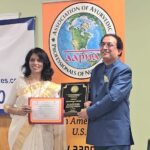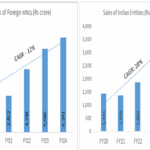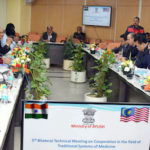Dr K Aggarwal ,President CMAAO, With input from Dr Monica Vasudev
IMA-CMAAO Webinar on “Thymus anatomy”, 28th November, 2020, 4-5pm
Participants
Dr KK Aggarwal, President CMAAO
Dr RK Datta
Dr Brijendra Prakash
Dr Anand Parkash
Dr S Sharma
Faculty
Dr JM Kaul
Director Prof and Former Head, Dept. of Anatomy, Maulana Azad Medical College, New Delhi
Consultant Academics and Advisor, Baba Saheb Ambedkar Medical College, Govt. of Delhi
Key points from the discussion
- Thymus is a primary lymphoid organ, which provides T lymphocytes to the whole body. The T cell precursors undergo development, differentiation and clonal expansion in the thymus. It is a part of the neuroendocrine axis of the body.
- Thymus varies at different stages of life under the influence of different physiological and pathological states.
- The shape of thymus is moulded to the adjacent structures. It is reddish in color and becomes yellowish with advancing age due to adipose infiltration at the cost of active lymphoid tissue. The older thymus can be differentiated from surrounding mediastinal fat only by the capsule, which covers the gland.
- Cortex (thymocytes) and the medulla (epithelial cells and scattered lymphocytes) form the thymic microstructure. The cortex has densely packed T lymphocytes.
- There are six types of epitheliocytes. Type 2 cells are present in the cortex towards medulla; type 3 and 4 are also interspersed in cortex thymic nurse cells. Type 5 and 6 are medullary. The type 6 cells are commonest and produce thymic hormones.
- The blast cells in the subcapsular cortex do not express any marker. They undergo mitosis, develop T cell receptor complexes and become CD3 positive (single). With further expression of TCR, they become double positive for CD4 and CD8.
- Hassal’s corpuscles start to form in prenatally and are very well established by the 5th month of intrauterine life; they increase with age
- T cells are involved in cellular immunity. They may have effector action (direct or indirect) and act against viruses, tissue cells, neoplastic cells. There are two types of T cells: Type 1, which kill by cytotoxins and type 2, which have a combination of defensive actions through cytokine release.
- Through the controlling action, they induce or suppress immune responses in B and T lymphocytes or other non lymphocytic cells derived from the bone marrow.
- Cytotoxic cells release toxic lysosomal proteins (porfirins), which can lyse the cell membrane.
- The delayed hypersensitivity related T cells react by synthesizing cytokines, which act by chemotactic substances and stimulating phagocytosis.
- Suppression cells are certain T cells, which when stimulated release cytokines that suppress the activity of B cells and other T cells.
- The balance between positive and negative controls in the T cell system is important in destruction of foreign antigens without the body itself being damaged.
- All true T cells express the CD3 molecular complex, which is responsible for signal transmission via TCR. They also express CD4 or CD8 complexes.
- CD4 cells include helper cells, which trigger antibody production from B cells, cytotoxic cells.
- CD8 cells include cytotoxic cells. NK cells are CD3+ve and do not express CD4 and CD8 markers.
- Non lymphocytic thymic cells include cells of mononuclear phagogytic system (monocytes) and present antigen to the T cells as they move from cortex to the medulla; fibroblasts and myoid cells.
- Thymic hormones are: thymulin, thymosin, thymopentin, thymic humoral factor; they have immunomodulatory effect on lymphocyte maturation and induce markers of early differentiation on lymphoid cells and enhance function of T cells.
- Thymocytes secrete IL-1,2,4,6; thymic epithelium secretes IL-1,3,4,6,7.
- The thymus increases in weight up to the first year of life, then the weight remains fairly constant at around 20 g until the 6th decade of life when the weight starts reducing.
- The number of thymocytes is greatly reduced but their production and differentiation persist throughout life.
- The number of T cells is greatly decreased in some critically ill patients with Covid-19.
- Pathogens may be more infective and prevalent in elderly (gerophilic), but may affect the young. Covid-19 is a gerolavic infection as it is much more severe in the elderly.
- The thymus involutes with increasing age. Age related senescence reduces the ability to resist infections.
- The role of T and B lymphocytes has opened up vistas of knowledge. It has helped to understand memory, tolerance, autoimmunity, immunodeficiency as well as inflammatory and immunopathological phenomenon.
- Recent investigations have highlighted the role of increased proinflammatory cytokines, impaired type 1 interferon response and functional exhaustion of anti-viral lymphocytes in the elderly patients with Covid-19.
healthysoch







